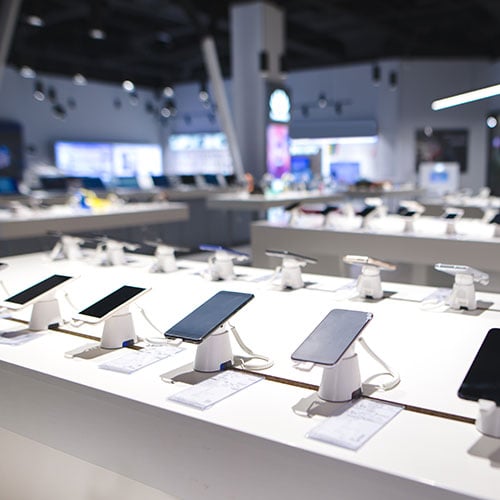Portfolio Planning
Without a crystal ball, New Product Development is a challenge that can leave many companies burning precious budgets, realising the wrong product to market. The consequence of getting NPD wrong are long tails of demand for End of Line product, which delays the introduction of new products.
Defining the Market
Business context
Understanding long-term trends and consumer needs is complex, compounded by increasingly fickle consumer buying. You get it wrong, leaving you with stranded inventory and market irrelevance. Get it right, and you’re market leading by gaining market share of early adopters and giving yourself more control over downstream demand and GMROI. NPD is a delicate game that once solely relied on human intuition from product managers, but now times are changing with access to data and technology.

Use your data to drive your NPD process
You can predict future sales wins by running Quantiful AI over your historical sales data.
Exploit external data sources
Adding Quantiful data from multiple external sources into the algorithm can further improve forecasting accuracy.
More hits and fewer misses
When fully optimised, Quantiful can design future products for you and tell you what to replace.
Lower risk profile
With Quantiful continuously analysing your portfolio, you can turn products over faster with much lower risk.
How do retailers create NPD plans?
Every organisation has a different approach to NPD. Some rely on intuition and blind luck, while others rely on extensive market research and surveys and spend time in portfolio discussions with buyers and suppliers. There’s no right or wrong way, but data is available to help – if you know how to use it.
How does Quantiful help?
The key to successful NPD is identifying trends relevant to you and your addressable market. Quantiful AI identifies the key attributes driving sales of your products over time and marries these with buying signals derived from external data sets available in Quantiful’s software. These data sets include market-specific social, search, environmental and econometric indices.
This means highly valuable historical demand signals for all your product attributes and consumers' responses to them during the product's lifecycle are captured and used to support new product design. This way, for a new product, you can draw on this data and combine it with any emerging recent trends (again from Quantiful data) to predict the demand expression from your addressable market with more confidence. New product forecasts and associated ROI can now be business-cased more quantitatively before investing in bringing these products to market.
.

Silver Fern Farms Success Story
Learn how New Zealand's largest meat exporter uses Quantiful to understand and measure trends in consumer buying behaviour in its key export markets.
What can you expect?
Quantiful NPD capability allows you to build products and forecast scenarios given market demand for your existing range augmented with new and emerging buying signals from your target market. Implemented correctly, it helps avoid product proliferation, will enable you to stay ahead of trends, and keep in touch with the demand of your entire range. Use Quantiful to increase customer satisfaction by gaining the mindshare of earlier adopters and innovators whilst maintaining control of late-in-lifecycle products to avoid write-downs or obsolescence.
Business benefits
Quantiful will ensure you beat the competition by staying in touch with your market through Quantiful's external data sources. Insight from your early adopters allows you to leverage market feedback for improvements. It will also enable you to control end-of-line products without delaying new product launches.
Give us a demand planning challenge we can work on together.
Subscribe to news and product updates

